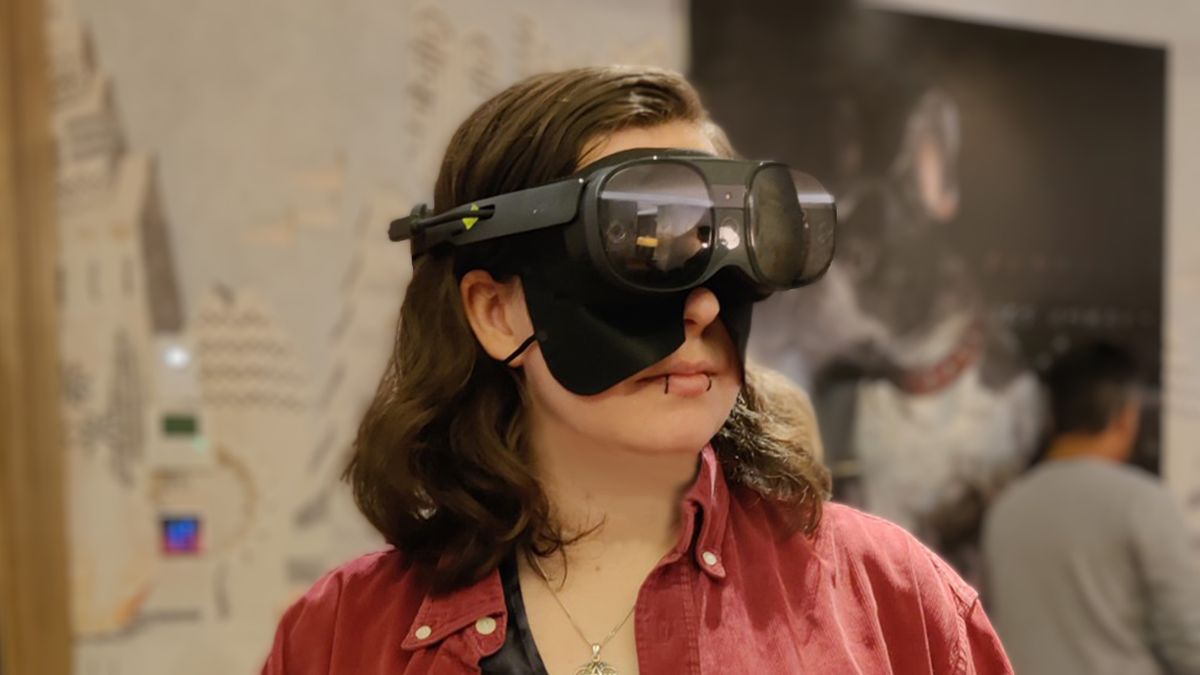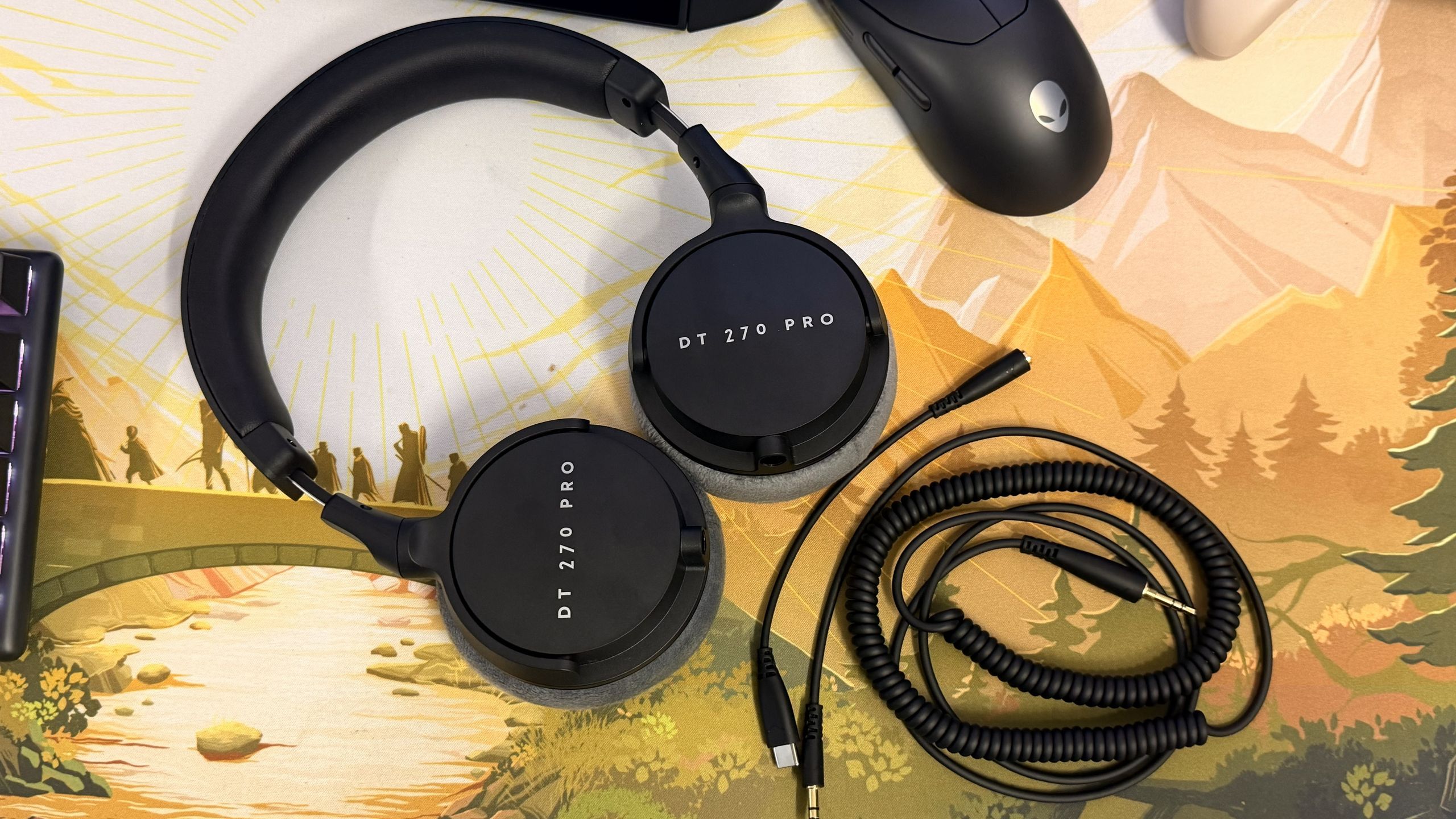If ever there was a headset that made me think after just 45 minutes with it, “Damn, maybe we could all end up wearing VR on the way to work” the HTC Vive XR Elite (opens in new tab) would be it. And although we’re a little way from living inside the Metaverse, this is still one of the lightest and most versatile VR headsets I’ve had the pleasure of testing out. Coming back from the hands-on event today I don’t feel the need to give my eyes a rest, either. Here’s how it went.
Although it was a little awkward without help, the per-eye IPD range of 54-73mm meant I was able to adjust it to my sight and go no-glasses. It’s just as well as I don’t think wearing the HTC Vive XR Elite with glasses would have been super comfortable. Something to consider if you have a highly specific glasses prescription.
Once I’d got the IPD right, putting it on was no issue. I specifically denied help when the HTC guys asked, because needing help to put on a VR headset does seem to point to bad design (or perhaps an acute case of technophobia).
I can confirm there are no such issues here.
Wearing the headset for a good 45 mins was a pleasure as I took down alien invaders and conducted an orchestra—an interesting combination. During my digital escapades, I didn’t notice an ounce of pressure from the HTC Vive XR Elite headset. I almost forgot I was wearing the thing, honestly. And the ability to simply take off the battery pack makes it super portable.
Once in place, I didn’t have to deal with any slippage, either, which is always good; no one wants to be constantly adjusting their VR headset.
What I did notice was, while the passthrough is vivid and super useful, I did have a little trouble with depth perception. Trying to grab my phone to take some photos took an attempt or two, but otherwise it’s an indispensible feature.
With 1920 x 1920 pixels per eye (3840 x 1920 pixels combined) the HTC Vive XR Elite has one up on its main (though much cheaper) contender, the Meta Quest 2 (opens in new tab). And while the 90Hz refresh pales in comparison to the Quest 2’s 120Hz, the idea of a perfectly weighted VR headset with 15 hours of battery life is getting me very excited, especially when I didn’t get any kind of motion sickness or eye strain.
One of my main concerns is over the obvious screen door effect around the edges of each display. It’s pretty prominent, though as long as you’re moving your head around instead of trying to see things out of your peripheral vision, it shouldn’t pose an issue.
The four cameras for that 6 DoF inside-out tracking did have a bit of trouble keeping up with my hand movements when I threw them up fast, or fully extended my arm, but there are still improvements to come in that department, I’ve been told.
Otherwise the hand tracking was pretty darn fluid and lifelike. And yes, I was able to throw a Vulcan salute. As for the controllers, they’re pretty standard, with good sensors, though I didn’t get to test the gyro out with any proper swinging movements. Still, it seemed pretty capable.
Coming February 15, the HTC Vive XR Elite will cost £1,300 / $1,100 and is definitely going to be one to watch. Just watch out if you’re ever testing one, because it’s so light I almost walked out of the hands-on session still wearing it.






